"Fugaku" supercomputer reveals the secrets of his performance
The Beijing Winter Olympics men's ski jumping normal hill individual event was held on February 6th, 2022. Ryoyu Kobayashi won the first gold medal of the Japanese team, marking the first time a Japanese individual jumper won a gold medal at the Olympics since Kazuyoshi Funaki won the large hill event at the 1998 Nagano Winter Olympics. Before the competition, the world's most powerful supercomputer, Japan's Fugaku, revealed the secrets behind his flying style, which had many Japanese people glued to their TV sets.
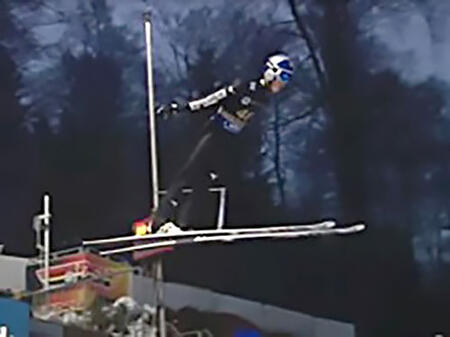
(courtesy of Hokusho University, Kobe University, and RIKEN; not from Beijing Winter Olympics)
Full aerodynamic simulation
In ski jumping, skiers compete to see who can jump the longest distance with the best flying form and nail the smartest landing. It is a unique sport in which aerodynamics, the physique of the athlete, and the individuality of their movements all have a great impact. Professor Keizo Yamamoto, who specializes in kinematics at the Faculty of Lifelong Sports, Hokusho University (Ebetsu City, Hokkaido) says: "Though athletes can only practice flying a limited number of days a year, they still try to find a flying posture that suits them through trial and error. I started researching ski jumps when I was a student, hoping to find information that could suit each individual athlete." Professor Yamamoto is also a staff member of the National Training Center, a training facility for top-level athletes.
In 2009, Professor Yamamoto began to conduct collaborative research with Professor Makoto Tsubokura to strengthen Japanese athletes. Professor Tsubokura works in the Computational Fluid Dynamics Lab at the Graduate School of System Informatics at Kobe University, Japan, and is also Team Leader of Complex Phenomena Unified Simulation Research Team at RIKEN.
The research group proceeded to analyze the performance of Kobayashi, who was considered to be a strong candidate for the gold medal. They began by measuring his physique. Then, by having athletes wear suits equipped with sensors and using motion capture technology, the researchers could capture their movements and convert them into data. This allowed them to continuously record the movements of Kobayashi and the athletes he was being compared to from the moment they stepped up for a jump until the moment they landed. Based on this information, they managed to create a complete 3D CG animation. Finally, using special software for the "Fugaku" supercomputer at RIKEN, they analyzed the air movements around the body and their effects. The research group calls this method "full aerodynamic simulation".
"I can't just talk about things based on what I'd thought before. I was very surprised"
The researchers found that Kobayashi's jump had a few distinctive features. First, (1) unlike the other athletes, Kobayashi's "drag" temporarily increased immediately after takeoff. This force comes from the air and typically hinders flight. However, it declined shortly thereafter. In the latter half of the jump, (2) the "lift" force, which keeps the body aloft, gradually increased. Finally, (3) the "lift-drag ratio", a value calculated by dividing lift force by drag force and that indicates flight performance, increased earlier for Kobayashi than for the other athletes and was almost maintained throughout the entire jump.

(Courtesy of Hokusho University, Kobe University, and RIKEN with modifications by JST)
Professor Yamamoto made the following observations on these characteristics. First, regarding the drag force (1), he noted that many athletes try not to lift their bodies early in the jump. Kobayashi, on the other hand, stretches his body and jumps out before assuming a flight posture (that is, with his body leaning forward). At first, he receives a lot of headwinds and the drag increases, which is disadvantageous. He quickly shifts to a flight posture, which lowers drag and maintains lift. However, it must be noted that these differences in posture are due to individuality, and it is not true that one is better than the other.
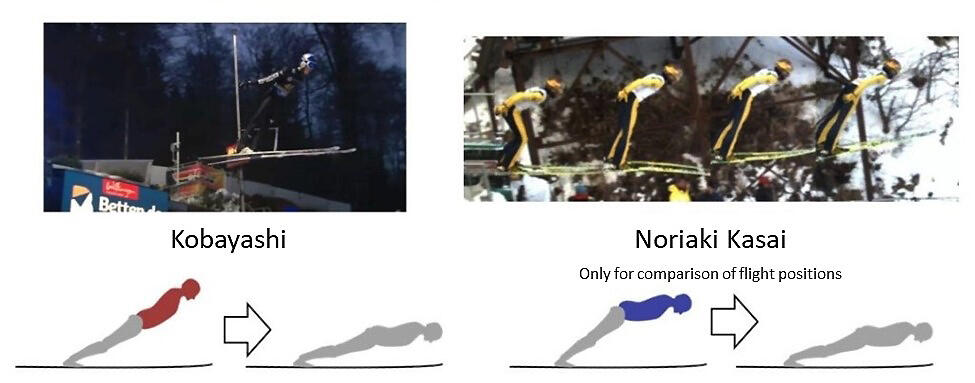
(Courtesy of Hokusho University, Kobe University, and RIKEN with modifications by JST)
As for the latter half of Kobayashi's jump, (2) the wind from the front flowed to his back as if it were wrapping around, causing less turbulence in the airflow and reducing the pressure on his back. This seems to have led to an increase in lift. The reason why the turbulence in the airflow is smaller is not clear and will be the subject of future research.
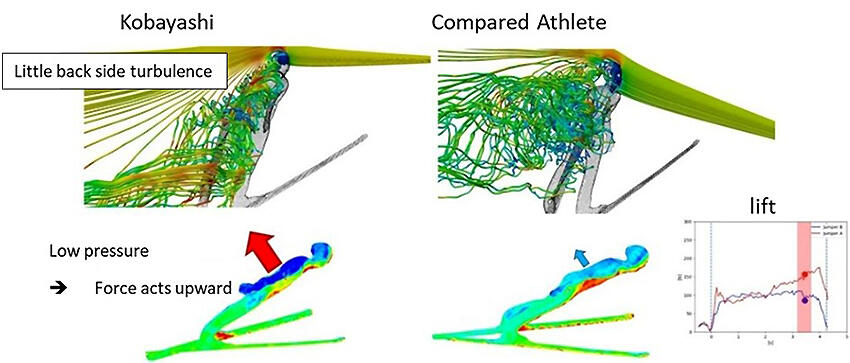
(Courtesy of Hokusho University, Kobe University, and RIKEN with modifications by JST)
Finally, (3) regarding the higher lift-to-drag ratio in the latter half of the jump, it appears that the angle of attack between the direction of flight and the direction of the airflow steadily increased, so that Kobayashi received wind from below. An aerodynamically disadvantaged attitude increases the risk of stall. Kobayashi managed to maintain his lift-to-drag ratio, thus preserving lift and extending the jump distance. "I can't just talk about things based on what I've thought before. I was very surprised", said Professor Yamamoto. In this regard, Professor Tsubokura says: "If you fly with the same attitude, you will usually stall. In theory, the reason a wing doesn't stall is because it's constantly changing the angle of attack slightly."
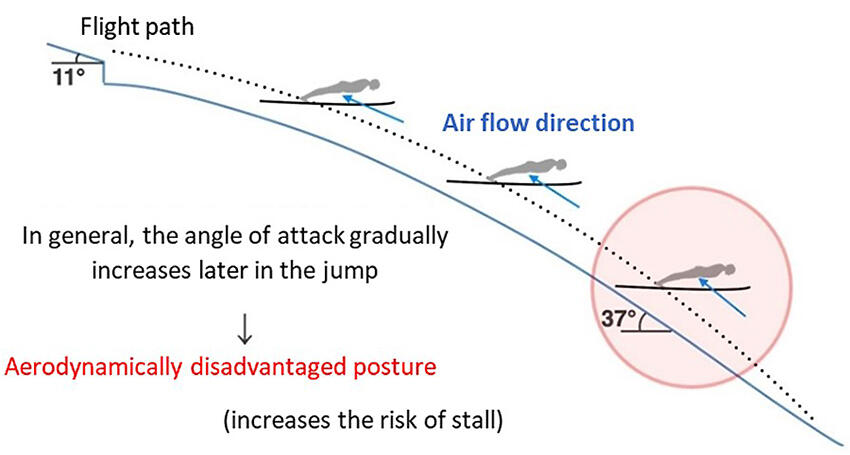
(Courtesy of Hokusho University, Kobe University, and RIKEN with modifications by JST)
The research group summarized these results in late January and made them widely available to Kobayashi, other Japanese athletes, and coaches. They are now preparing to give a presentation at a conference in Europe and submit a paper for publication.
"Tailor-made science" to improve the performance of athletes
Fugaku was jointly developed by RIKEN and Fujitsu as a successor to the "K" supercomputer. It was set up at the RIKEN Center for Computational Science (Kobe City) and has been in full operation since last March. However, Fugaku has been in use since April 2020 on a trial basis, yielding results to help us combat COVID-19. In November 2021, it entered the "TOP500" supercomputer calculation speed ranking and won three other prizes over four consecutive years, confirming its high-level capabilities. Now, its use in sports science demonstrates the far-reaching potential of Fugaku.
According to Professor Tsubokura, this study marks the first time the complicated flight process of ski jumping was completely simulated. There are three main reasons for using Fugaku: its calculation speed, its accuracy, and its ability to perform many simulations at the same time.
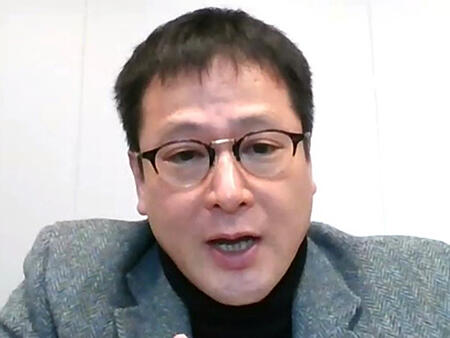
Fugaku's calculation speed is an order of magnitude higher than that of conventional supercomputers. However, Professor Tsubokura remarks that this is still not enough. "It still takes a whole night to calculate a jump using a single CPU. Ultimately, we would like to be able to finish the simulations after the first jump and be coaching before the second jump. I believe Fugaku can do that if we tune her up right," he says. Thanks to Fugaku's high calculation accuracy, it is possible to distinguish between the different physiques of athletes jumping at high speeds. Professor Tsubokura also says that by performing many simulations at the same time, it will be possible to coach athletes on different ways to jump. He foresees that AI (artificial intelligence) will let computers themselves make suggestions on how to jump.
"It is important for science to be close to the athlete. This time we're only studying Kobayashi's jump, but we want to build a system that can be tailor-made for each athlete," says Professor Tsubokura. "Athletes can only jump a few times a day, so we would like to do far more computer simulations and propose the best way to jump for each of them. Science has typically sought out ideal, universal technology, but the challenge here is that each person needs it to be tailor-made," he adds.
Can we start thinking like birds?
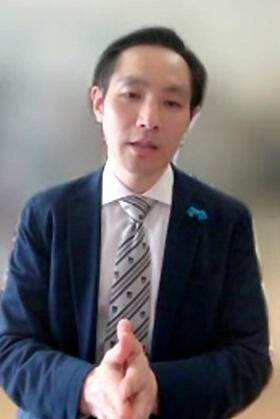
Professor Yamamoto, who has been engaged in research for many years, reminds us again that Kobayashi's jump did not demonstrate the gold standard, and that there should be an optimized performance for each athlete.
While experienced athletes usually win in this sort of competition, inexperienced athletes can suddenly take the world lead. Professor Yamamoto cites Kobayashi and Sara Takanashi, both of whom participated in the Beijing Winter Olympics, as examples. "It's a mysterious sport. Those who realize its principles can fly, but those who fail to do so, no matter how much they practice, will never make it to the top. How can we make the mind shift from human to bird? Athletes, coaches, and researchers alike want to know, but there is no answer yet", he says.
On February 4th, two days before the finals, Professor Tsubokura said: "We now have scientific proof as to why Kobayashi is so good. I want to tell him to fly with confidence in the Beijing Olympics." It seems the passion of the researchers surely reached Kobayashi's heart, and that the goddess of victory also smiled.
(KUSAKA Takeo / Science Portal Editorial Office)
Original article was provided by the Science Portal and has been translated by Science Japan.




